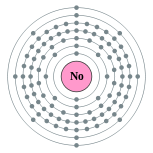Nobelium
Janet Kuypers

from the “ Periodic Table of Poetry” series (#102, No)*
I never saw you.
You were the one thing
we were all looking for —
peace —
and we didn’t know
what it would look like
when we found it.
If we found it.
I heard that Sweden
laid claim to you first,
but I swear,
we were all searching for you,
and I think that like most Americans
we would even try to synthesize you
in order to lay claim to you.
Listen to me,
like all Americans,
laying claim to you.
Possessing you.
Maybe you’ve kept yourself
so well hidden
because we’ll never learn
how to live in peace…
Maybe we can only take peace
in small amounts,
mixed with our usual
anger and discontent.
I know you’ve been around
for so very long,
and I can’t remember
how many years
we’ve been searching for you.
Had your hair grown
to silvery white or gray
waiting for us
to truly want peace?
Have you grown rough and metallic
in your impatience with us?
Would you be a hazard to us
if we took you in
in sufficient amounts?
Because, we want to take that chance.
Because we’ve been looking,
and we’ve been waiting for you.
* The discovery of element 102 was first announced by physicists at the Nobel Institute in Sweden in 1957. The synthesis of element 102 was then claimed in April 1958 at the University of California, Berkeley. Element 102 was first named nobelium (No) by its claimed discoverers in 1957 by scientists at the Nobel Institute in Sweden. The name was later adopted by Berkeley scientists who claimed its discovery in 1959. The International Union of Pure and Applied Chemistry (IUPAC) officially recognised the name nobelium following the Berkeley results. In 1994, and subsequently in 1997, the IUPAC ratified the name nobelium (No) for the element on the basis that it had become entrenched in the literature over the course of 30 years and that Alfred Nobel should be commemorated in this fashion.
Little is known about the element but limited chemical experiments have shown that it forms a stable divalent ion in solution as well as the predicted trivalent ion that is associated with its presence as one of the actinides.
The appearance of this element is unknown, however it is most likely silvery-white or gray and metallic. If sufficient amounts of nobelium were produced, it would pose a radiation hazard.

